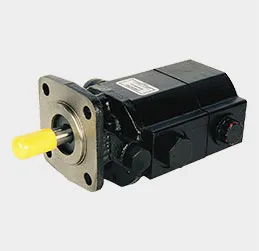High-Performance Die Casting of Aluminium Alloys for Advanced Manufacturing Applications
High-Pressure Die Casting of Aluminium Alloys
High-pressure die casting (HPDC) is a widely utilized manufacturing process known for its precision and efficiency in producing complex metal parts. Among the various materials used in this process, aluminium alloys stand out due to their favorable properties, including lightweight, excellent corrosion resistance, and good mechanical performance. This article explores the significance of HPDC in aluminium alloys, detailing the process, advantages, applications, and future trends.
The HPDC Process
HPDC involves forcing molten aluminium alloy into a mold at high pressure. The process begins with heating the aluminium alloys to their melting point, typically around 660°C. Once the alloy becomes molten, it is injected into a preheated steel die through a nozzle. The pressure used can exceed 1,000 bar, enabling the molten metal to fill intricate designs that are often impossible with traditional casting methods.
After the molten aluminium fills the mold, it is quickly cooled and solidified. The cooling rate is critical, as it influences the final properties of the cast part. Once solidified, the die is opened, and the finished part is ejected. This rapid production cycle allows for high volumes of components to be manufactured with minimal waste.
Advantages of Using Aluminium Alloys
1. Lightweight and Strong Aluminium alloys are significantly lighter than their steel counterparts, making them ideal for applications where weight reduction is crucial, such as automotive and aerospace industries. Despite their lightness, many aluminium alloys offer impressive strength-to-weight ratios.
2. Excellent Corrosion Resistance Aluminium naturally forms a protective oxide layer when exposed to air, enhancing its resistance to corrosion. This property makes aluminium alloys suitable for various environments without requiring additional protective coatings.
3. Versatile Mechanical Properties Depending on the alloying elements used (such as magnesium, silicon, copper, and zinc), aluminium alloys can be tailored to achieve specific mechanical properties, including enhanced strength, ductility, and weldability.
4. Cost-Effectiveness HPDC allows for efficient mass production of components, reducing the cost per part. The process minimizes scrap material as the molten metal perfectly fills the mold with little excess, making it an economically viable option.
hpdc aluminium alloys

5. Surface Finish and Precision Parts produced through HPDC often have excellent surface finish and dimensional accuracy, reducing the need for secondary machining processes. This precision ensures components fit correctly without requiring extensive modifications.
Applications of HPDC Aluminium Alloys
HPDC aluminium alloys find extensive use across various industries. In the automotive sector, components such as engine blocks, transmission housings, and structural parts benefit from the lightweight yet strong nature of aluminium. The aerospace industry utilizes HPDC parts for aircraft fuselages and engine components, where weight savings translate directly to improved fuel efficiency.
Additionally, the electronics industry incorporates HPDC aluminium alloy casings for devices, providing both protection and heat dissipation. The telecommunications sector also relies on these alloys for enclosures and structures, where strength and durability are paramount.
Future Trends
As environmental concerns grow, the demand for lightweight materials, such as aluminium alloys, will increase. The move towards electric vehicles (EVs) has further accelerated this trend, as manufacturers seek to reduce vehicle weight to enhance range and efficiency. Research in alloy compositions aims to improve the mechanical properties of aluminium while maintaining its lightweight characteristics.
Moreover, advancements in HPDC technology, such as improving die life and reducing cycle times, will enhance the process's efficiency. Innovations in additive manufacturing may also intersect with die casting, potentially leading to hybrid techniques that combine the benefits of both.
Conclusion
High-pressure die casting of aluminium alloys is an essential manufacturing process that caters to the needs of multiple industries. Its advantages, including lightweight properties, corrosion resistance, versatility, and cost-effectiveness, make it a preferred choice for producing high-quality components. As technology evolves and the demand for sustainable practices increases, HPDC will remain a crucial player in shaping the future of manufacturing.
-
OEM Sand Cast Pump Valve Fittings - Baoding Hairun Machinery And Equipment Trading Co., Ltd.NewsJul.31,2025
-
OEM Sand Cast Pump Valve Fittings - Baoding Hairun | Precision Engineering, CustomizableNewsJul.30,2025
-
OEM Sand Cast Pump Valve Fittings - Baoding Hairun Machinery And Equipment Trading Co., Ltd.NewsJul.30,2025
-
OEM Sand Cast Pump Valve Fittings - Baoding Hairun Machinery And Equipment Trading Co., Ltd.NewsJul.30,2025
-
OEM Sand Cast Pump Valve Fittings - Baoding Hairun Machinery|Precision Engineering&Fluid ControlNewsJul.30,2025
-
OEM Sand Cast Pump Valve Fittings - Baoding Hairun Machinery And Equipment Trading Co., Ltd.NewsJul.30,2025















